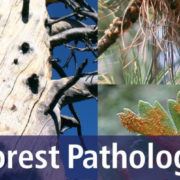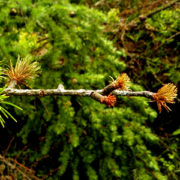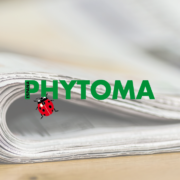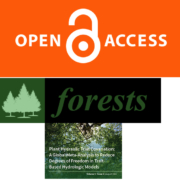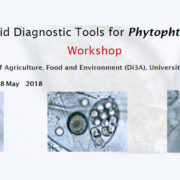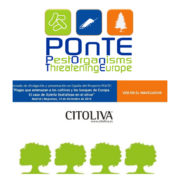Occurrence and pathogenicity of Phytophthora × cambivora on Prunus laurocerasus in Serbia
Authors
I. Milenković (1,2), N. Keča (3), D. Karadžić (3), Z. Radulović (2), M. Tomšovský (1), T. Jung (1,4)
Affiliations
(1) Phytophthora Research Centre, Mendel University in Brno, Brno, Czech Republic. (2) Institute of Forestry, Belgrade, Serbia. (3) Faculty of Forestry, University of Belgrade, Belgrade, Serbia. (4) Phytophthora Research and Consultancy, Nußdorf, Germany
Abstract
Cherry laurel (Prunus laurocerasus) is a native plant species in Serbian forests, but is also widely used for ornamental plantings. Following two extremely wet summers in 2014 and 2015, in spring and summer of 2016 and 2017, numerous cherry laurel plants with symptoms indicative for Phytophthora diseases, like wilting and chlorosis of leaves, dieback and bleeding bark necroses, were recorded in a park in Belgrade and in two ornamental nurseries in central Serbia. From necrotic bark samples and rhizosphere soil, self‐sterile Phytophthora isolates with woolly colonies were obtained. Due to the production of ellipsoid and elongated, non‐papillate sporangia in water and of ornamented oogonia with two‐celled antheridia in mating tests with tester strains of both Phytophthora × cambivora and P. cryptogea, these isolates were identified as P. ×cambivora which was confirmed by ITS sequence analysis. Pathogenicity of P. ×cambivora from cherry laurel (PCCL) was tested by inoculating one‐year‐old seedlings of cherry laurel under the bark. P. ×cambivora from European beech (PCB), and isolates of P. cactorum (CAC), P. cryptogea (CRY), P. plurivora (PLU) and P. ×serendipita (SER) were included as comparison. Three and a half months after inoculation, nine of the twelve plants in PCB, three in PCCL and CAC and two in PLU declined with longitudinal necroses and chlorosis, wilting and premature shedding of leaves. These results demonstrate the ability of P. ×cambivora to infect and cause decline of cherry laurel plants. The particularly high aggressiveness of the P. ×cambivora isolate from beech shows that this pathogen poses a serious risk to cherry laurel in the rare natural communities of cherry laurel and beech in Serbia.
This work was partially supported by European Union’s Horizon 2020 research and innovation programme under grant agreement—”Pest Organisms Threatening Europe‐POnTE” Project ID: 635646.
Published on April 19, 2018 by FOREST PATHOLOGY

